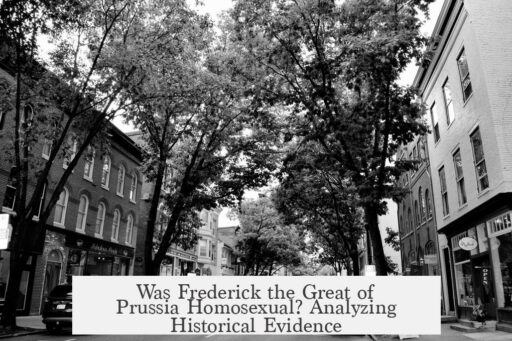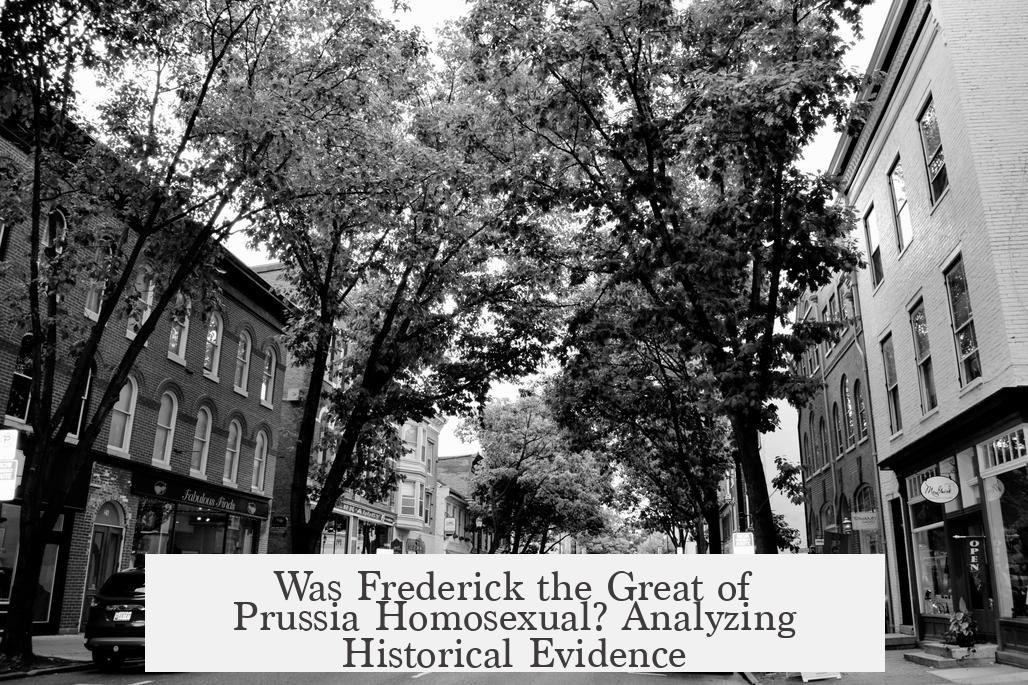Frederick the Great’s sexual orientation remains uncertain because modern categories like “gay” do not fit his 18th-century context. While some evidence suggests he may have had relationships with men, historical proof remains inconclusive.
Understanding Frederick’s sexuality requires recognizing the problem of presentism. The term “gay” as an identity did not exist in the 18th century. Men might engage in sexual acts with other men, but they did not define themselves by sexual orientation. Sexual behavior was considered actions rather than fixed traits. Thus, Frederick himself, or his contemporaries, would not have viewed his same-sex interactions under modern labels.
Historically, speculation about Frederick’s sexuality has sparked debate, but no definitive proof exists. Scholars and historians differ in their interpretations. Some point to his all-male circle, intimate correspondences, and rumors, but none conclusively determine if he identified as or behaved exclusively as a homosexual.
One often-cited piece of evidence is a letter Frederick wrote to his friend Christian Friedrich von Darget. The letter contains a peculiar phrase mentioning “hemorrhoids” greeting Darget’s “v…….”. This is widely interpreted as a veiled reference to male genitalia. However, the original letter does not explicitly complete the word, leaving the meaning ambiguous. Moreover, Frederick commonly used casual, humorous, and flowery language in his correspondences. References to hemorrhoids appear in other letters too, without sexual connotation. This freedom of speech complicates using such letters as firm evidence of his sexuality.
Frederick surrounded himself with men, especially at his summer residence. Some interpret this as evidence of homosexual preference. Yet this was typical of aristocratic male bonding of the era and a continuation of his father’s all-male “tobacco club”. The observation that Frederick preferred tall men in uniform is often cited, but Frederick fathered 14 children. This fact suggests he engaged heterosexually at least to some extent, complicating straightforward assumptions.
Contemporaries did speculate about Frederick’s sexuality. Foreign visitors, French writers, and even his sister hinted at his disinterest in women and possible same-sex attractions. However, none provided proof, relying mostly on rumors, gossip, or inference. Some scholars propose alternative interpretations such as asexuality, or simply a preference for male companionship without sexual involvement.
Early in his life, rumors about Frederick’s intimate relationships surfaced. His close bonds with men like Hans Hermann von Katte and General von Keith were scrutinized. Yet their true nature remains unclear. The rumors caused political and familial tension but never included definitive evidence of sexual activity or orientation.
Frederick’s correspondence also reveals his literary style, often filled with flowery, poetic language. His letters to Madame de Wreech, for example, praise her but do not offer clear romantic or sexual undertones beyond what one expects from a man who habitually used expressive language. He even sent ornate letters to creditors. This style makes it hard to interpret his words as straightforward emotional or sexual expressions.
One notable quote attributed to Frederick reads: “J’aime le sexe, mais je l’aime d’un amour bien volage; je n’en veux que la joissance, et après, je le méprise.” Translated, it means, “I love sex, but I love it with a very fickle love; I only want the pleasure of it, and after that, I despise it.” This statement communicates ambivalence about sex but does not specify partners’ gender. It therefore adds little clarity regarding his sexual orientation.
To summarize the complexity:
- Frederick’s era understood sexual acts differently—”gay” identity did not exist.
- Correspondence includes ambiguous references open to interpretation.
- He maintained an all-male entourage, common for the time among royalty.
- Fathered 14 children, suggesting he had heterosexual relations.
- Contemporaries speculated, but concrete proof is absent.
- Alternative views include asexuality or preference for male company without sex.
- His literary style complicates interpretation of romantic or sexual content.
Given all evidence and context, historians conclude that Frederick the Great’s sexuality cannot be definitively categorized today. His personal desires remain partly obscured by time, language, and cultural differences. Thus, any claims must be treated cautiously.
Key takeaways:
- The term “gay” did not exist in Frederick’s time, so applying it is anachronistic.
- Letters and relationships show possible male affection but no conclusive proof.
- His all-male circle was typical aristocratic practice, not necessarily romantic.
- Fathering 14 children complicates assumptions of exclusive homosexuality.
- Speculation based on rumors lacks firm historical evidence.
- Ambiguous language in correspondence requires careful interpretation.
- Frederick’s sexual orientation remains unknown despite ongoing scholarly interest.
Was Frederick the Great considered gay by his contemporaries?
Some foreign visitors and writers speculated about his sexuality and disinterest in women. His sister also hinted at it. However, none offered real proof during his lifetime.
Does the ‘hemorrhoids greeting’ letter prove Frederick was gay?
No definitive proof comes from that letter. Frederick never spelled out the meaning, and the phrase was casual. He mentioned hemorrhoids often, not only to Draget, so reading homoerotic meaning is uncertain.
Did Frederick the Great have relationships with women?
He fathered 14 children, which complicates assumptions about his sexuality. His letters to women used flowery language, but nothing overly romantic or sexual beyond his style—he even wrote poetic letters to creditors.
Could Frederick’s close male friendships mean he was gay?
He surrounded himself with men, like his father’s all-male tobacco club. He praised tall men in uniform but this doesn’t confirm his sexuality. He may have preferred male company without it implying he was gay.
Is it possible Frederick was asexual or had a different sexuality?
Some suggest he might have been asexual or indifferent to sex but favored male companionship. The truth about his sexuality remains unknown due to lack of clear evidence.




